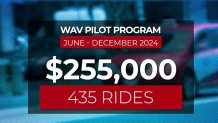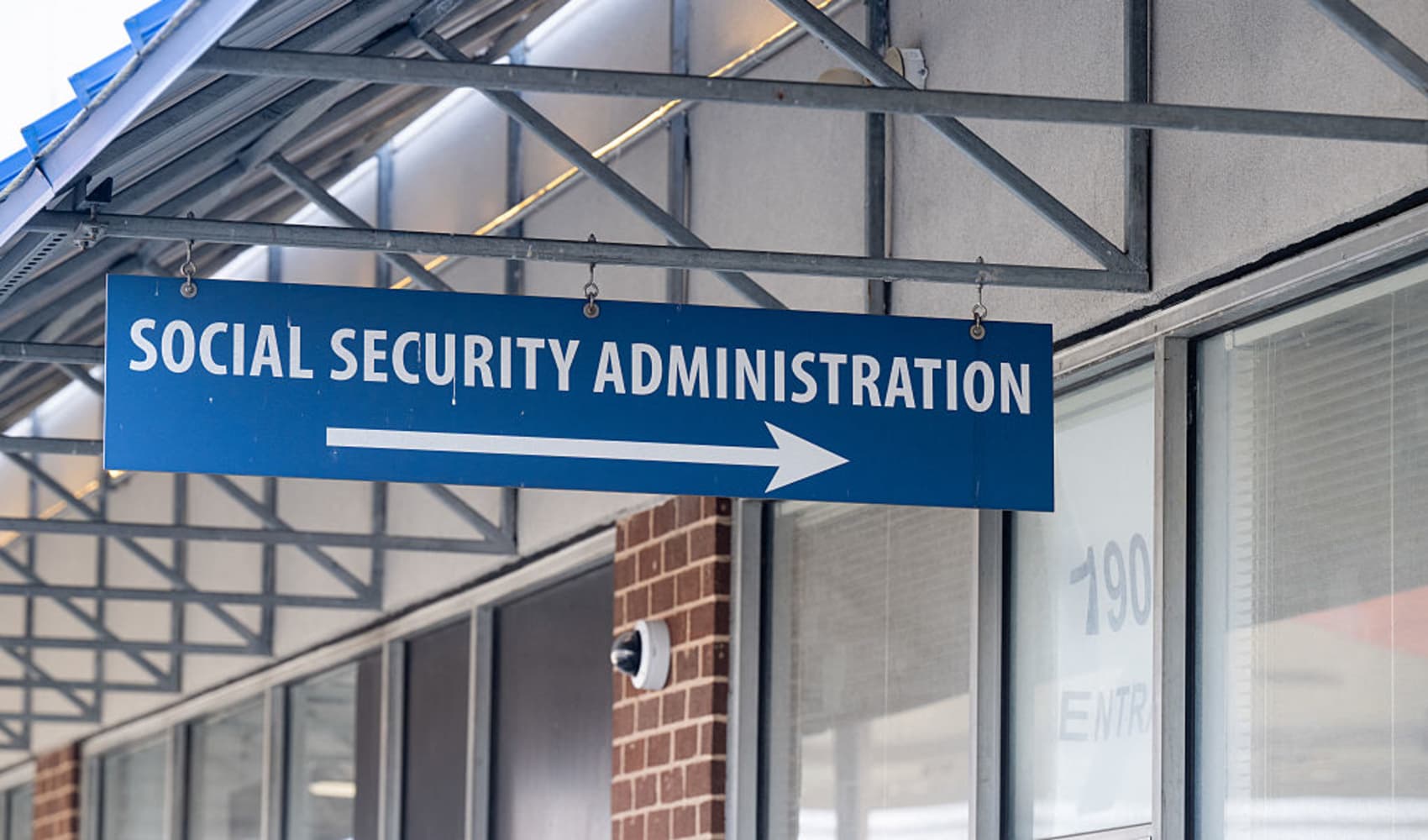For years, advocates have told the News4 I-Team it’s hard, if not impossible, for people in wheelchairs to find accessible taxi in D.C. The District is spending big money to make taxis more accessible. But where is that money going? News4’s Ted Oberg reports.
On the afternoon we caught up with Kelly Mack, she just needed a ride to the grocery store.
"This is the part where you kind of wait and see," said Mack, watching her phone.
Stream NBC4 newscasts for free right here, right now.
She’s used a wheelchair since she was 10. She moved to D.C. after college, she said, because our city was trying to be more accessible. When the News4 I-Team asked if the city was keeping its promise, she responded, "Here and there."
D.C. does have a few options for passengers with wheelchairs. Metro trains and buses are accessible. MetroAccess works too, but it requires setting up rides days in advance and being willing to wait.
We have the news you need to know to start your day. Sign up for the First & 4Most morning newsletter — delivered to your inbox daily.
The Transport DC program offers subsidized taxi rides, but only within the District.
When it comes to ride share companies like Uber and Lyft, the District does not require them to have wheelchair-accessible vehicles — even though they account for 95% of all for-hire rides here.
That leaves taxis, which make up just 5% of all for-hire trips in D.C. Taxis are District-regulated and provided 23,000 trips for people who use wheelchairs last year.
"I call it the yeti, because it's rumored to exist, but, you know, I rarely ever see it," exclaimed a frustrated Mack while waiting on a taxi she had reserved days before we met up.
The District has worked to increase service. D.C. has a law mandating 20% of large cab fleets be wheelchair-accessible, but the I-Team couldn't find it’s ever been enforced.
The head of the Department of For-Hire Vehicles (DFHV) told the I-Team, "We can’t punish them into compliance."
Passenger Naomi Hess was hopeful last year when D.C. set aside $500,000 to incentivize cabdrivers to operate wheelchair-accessible vehicles, paying more per hour or to work late hours.
“There really, really needs to be progress,” said Hess.
The city even set up a wheelchair-accessible vehicle (WAV) hotline for people to get connected.
“I tried that pilot line multiple times, and they just couldn't find one for me. Where is the money going?” asked Hess.
The city already spent $255,000 in that pilot program and told the I-Team it generated 435 taxi trips from June to December. That's $586 per ride.

Jonathan Rogers — the director of DFHV, which spearheaded the pilot — wouldn't talk to News4 on camera, but said "Council encouraged us to experiment and figure out what would change behavior ... so that's what we did."
He said he hoped it would build momentum, and that the six new drivers with accessible vehicles added would stick with it.
The department just launched a new pilot program in March, and says it’s offering more incentives to taxi companies and drivers. Plus, a spokesperson said it would send letters to all taxi companies asking for their long-term plans to address the issue.
“Anyone without a wheelchair can get an Uber, Lyft or taxi whatever they want. It's just not fair. And it has put me in unsafe situations," Hess told the I-Team.
Last fall, she had all her travel planned out so she could attend a Sabrina Carpenter concert in Baltimore. But a delayed train back to D.C. got her to Union Station at 1 a.m., leaving her with few options.
"I was forced to walk home alone in the middle of the night."
Both she and Mack said it isn't like this everywhere. In New York City, there are more than 12,000 wheelchair-accessible taxis and ride share vehicles, according to the NYC Taxi and Limousine Commission.
The city said 46% of its taxi fleet is wheelchair-accessible. By law, anyone who now wants to start driving for ride shares has to use an accessible vehicle there.
Back in D.C., Uber has some accessible vehicles but did not respond to our questions about how many.
While Lyft offers accessible rides in nine other cities, it does not in the District. A spokesperson told the I Team it "will continue to push for solutions that make rideshare as accessible as possible for everyone."
As for taxis, none of the larger companies in town would talk to News4 on camera. But they did admit it's a challenge, saying wheelchair-accessible taxis are both expensive to buy and costly to maintain due mostly to their weight and modifications.
That could explain why the I-Team found so many out-of-commission vehicles in taxi lots with markings that read "junk" and "need engine and transmission."
Back at Mack’s apartment, she still waited for confirmation her taxi was on the way. It’s been so frustrating for her that she started keeping track of all her taxi calls over the past three years.
"I had 72 attempted trips," she said. "I averaged those years and came out with a 71% failure rate."
Which is exactly what happened on the day we hung out with her.
"We'll wait a few more minutes and then probably gear up, put on the coat, head out," she said.
But that taxi never came.
Ella Robinson contributed reporting to this investigation.
Sign up for our free deep-dive newsletter, The 4Front, to get standout News4 stories sent right to your inbox. Subscribe here.




